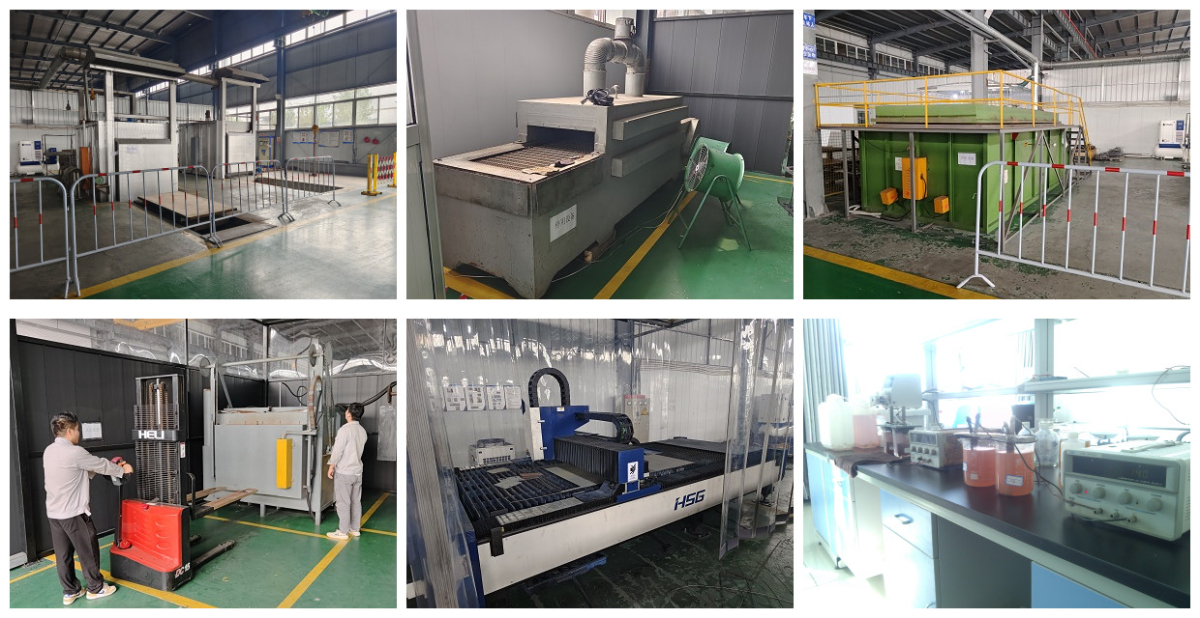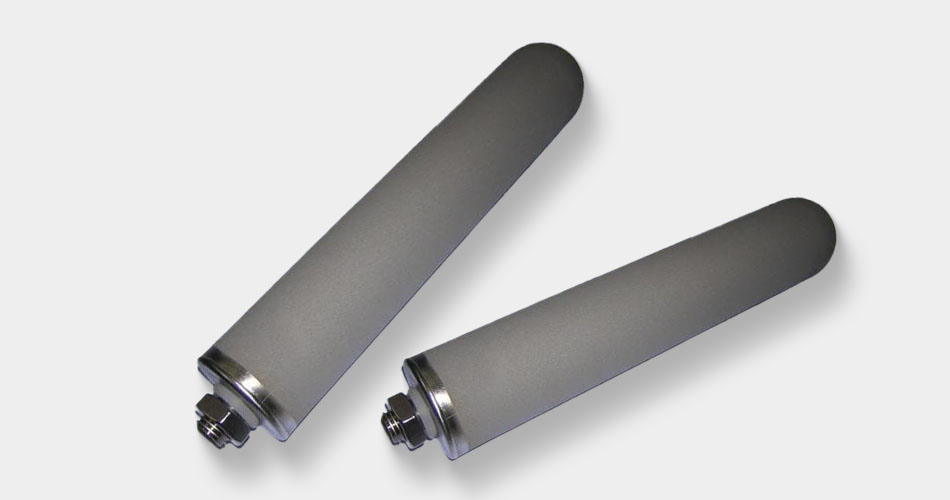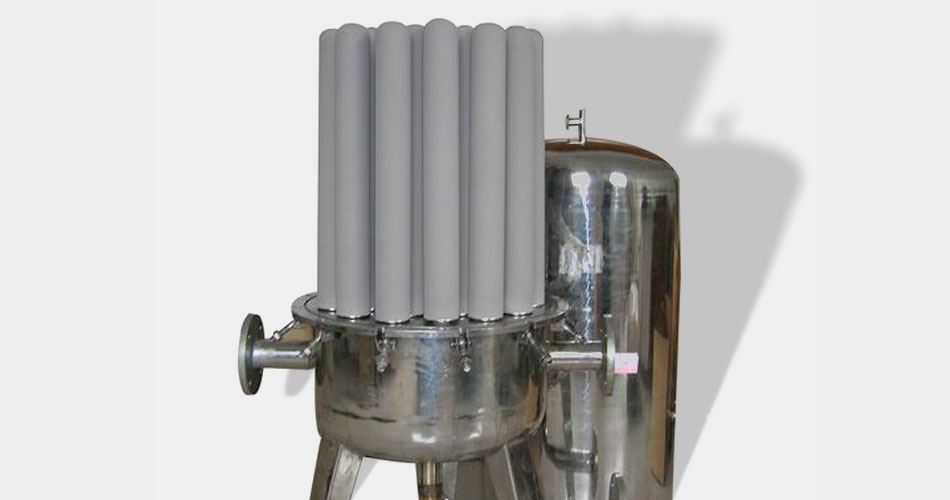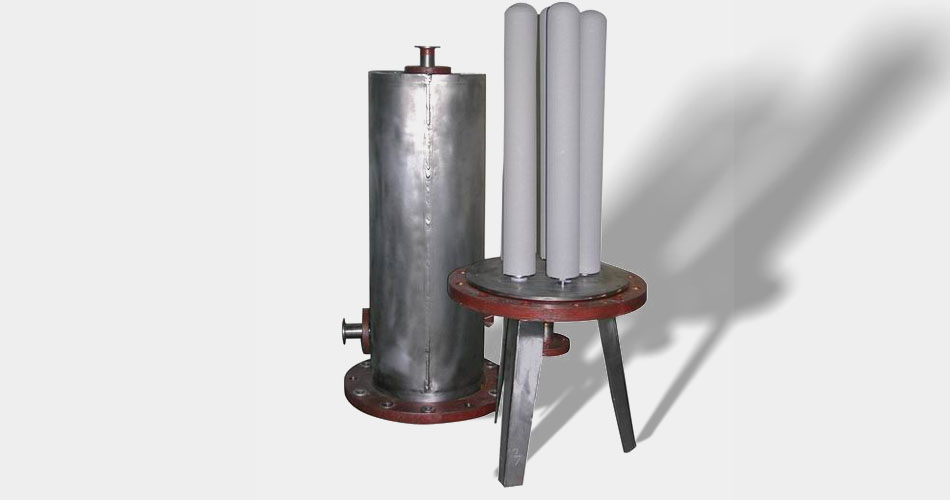Stainless steel filter element is a filtering element made of stainless steel material.
- Material characteristics
Stainless steel has characteristics such as high strength, corrosion resistance, high temperature resistance, and wear resistance. This enables stainless steel filter elements to operate stably in various harsh working environments and is suitable for different fluid filtration needs. For example, in industries such as chemical, petroleum, and pharmaceuticals, when facing media with strong corrosiveness, stainless steel filter elements can effectively resist corrosion, ensuring the filtration effect while prolonging service life. - Structure and working principle
Stainless steel filter elements are usually cylindrical and are made of multiple layers of stainless steel wire mesh or sintered stainless steel powder. When fluid passes through the filter element, impurities therein are blocked on the surface or in the internal pores of the filter element, thus achieving the purpose of filtration. Different structural designs can meet different filtration precision requirements, from coarse filtration to high-precision filtration. - Application fields
Water treatment industry: Used to remove suspended solids, particle impurities, etc. in water to ensure the cleanliness of water quality. It plays an important role in industrial water treatment and drinking water purification.
Food and beverage industry: Ensure the purity of food and beverages and prevent impurities from entering the product and affecting quality and safety.
Petrochemical industry: Filter impurities in media such as oil and gas to protect the normal operation of equipment and improve production efficiency.
Pharmaceutical industry: Filter liquids and gases in the drug production process to meet strict hygiene and quality requirements. - Advantages
Long service life: Due to the excellent performance of stainless steel, the service life of the filter element is relatively long, reducing the replacement frequency and maintenance cost.
Cleanable and reusable: Some stainless steel filter elements can be cleaned and reused after removing blocked impurities, reducing the use cost.
High filtration precision: It can effectively remove tiny particle impurities and provide high-quality filtration effect.
High strength: It can withstand relatively high pressure and flow rate and is not easily deformed or damaged.
The filtration accuracy standard of stainless steel filter elements is an important indicator for measuring their filtration performance.
-
- I. Definition of filtration accuracy
Filtration accuracy refers to the particle size that a stainless steel filter element can effectively block. It is usually expressed in units of microns (μm). For example, a filtration accuracy of 10 microns means that the filter element can block particles with a diameter greater than 10 microns. - II. Common filtration accuracy grades
Coarse filtration: Generally, the filtration accuracy is above 25 microns. It is mainly used to remove larger particle impurities such as rust and sediment. It is suitable for occasions with low filtration requirements, such as the preliminary filtration of industrial water.
Medium filtration: The filtration accuracy is between 10 microns and 25 microns. It can remove smaller particle impurities such as dust and suspended matter. It is widely used in some industrial fields and some civil fields with higher water quality requirements.
Fine filtration: The filtration accuracy is between 5 microns and 10 microns. It can effectively remove tiny particles and ensure the high purity of the fluid. It is often used in industries with extremely high filtration accuracy requirements such as pharmaceuticals, electronics, food and beverages.
Ultra-fine filtration: The filtration accuracy is below 5 microns and can even reach sub-micron levels. This high-precision filtration can remove extremely tiny particles and impurities and ensure the quality and performance of products. It is mainly applied in fields such as high-end electronics and semiconductor manufacturing. - III. Factors affecting filtration accuracy
Filter element structure: Different structural designs will affect filtration accuracy. For example, the filtration accuracy of a stainless steel wire mesh filter element depends on the pore size and number of layers of the wire mesh; the filtration accuracy of a stainless steel powder sintered filter element is related to the size of the powder particles and the sintering process.
Fluid characteristics: Factors such as the viscosity, temperature, and pressure of the fluid will also affect the filtration accuracy. For example, high-viscosity fluids may reduce the filtration efficiency of the filter element; high-temperature and high-pressure environments may affect the performance and service life of the filter element.
Usage conditions: Usage conditions such as the installation method, usage time, and cleaning frequency of the filter element will also affect its actual filtration accuracy. If the filter element is improperly installed or not cleaned for a long time, the filtration accuracy may decrease. - IV. Detection methods of filtration accuracy
Particle counting method: Determine the filtration accuracy of the filter element by measuring the number of particles in the fluid before and after filtration. This method is relatively accurate but requires professional detection equipment and technology.
Gravimetric analysis method: Measure the weight of impurities in the fluid before and after filtration to calculate the filtration accuracy of the filter element. This method is relatively simple but has low accuracy.
Microscope observation method: Use a microscope to observe the particle size and distribution in the fluid before and after filtration to judge the filtration accuracy of the filter element. This method is intuitive but requires certain experience and technology.
- I. Definition of filtration accuracy
The filter precision has a significant effect on the service life of the filter element
- I. Particle size and clogging degree
Filtration accuracy determines the particle size range that the filter element can block. When the fluid contains more particles close to or smaller than the filtration accuracy, these particles are easy to clog the pores of the filter element. For example, for a filter element with a filtration accuracy of 10 microns, if there are a large number of particles ranging from 8 microns to 12 microns in the fluid, over time, these particles will gradually accumulate inside the filter element, narrowing the flow channel of the filter element and thus increasing the resistance of the fluid passing through the filter element. The increase in resistance will not only reduce the filtration efficiency but also make the filter element bear a greater pressure difference during operation. When the pressure difference reaches a certain level, it may cause damage to the filter element structure and thus shorten the service life of the filter element. - II. Difficulty and frequency of cleaning
During the use of filter elements with different filtration accuracies, the difficulty and frequency of cleaning will also be different. Generally speaking, the higher the filtration accuracy of the filter element, the smaller the pores and the smaller the clogged particles, and the more difficult it is to clean. For example, for filter elements with ultra-fine filtration, the filtration accuracy is below 5 microns and even reaches the sub-micron level. These tiny particles often penetrate deep into the internal structure of the filter element and are difficult to remove by conventional cleaning methods. To ensure the filtration effect, more complex cleaning processes or replacement of filter elements may be required, which will undoubtedly increase the use cost and shorten the service life of the filter element. While for coarse filtration filter elements with lower filtration accuracy, due to their larger pores, particles are easily washed off and cleaning is relatively easy, which can extend the service life of the filter element to a certain extent. - III. Interaction between fluid characteristics and filter element material
Filtration accuracy also affects the interaction between fluid characteristics and filter element material. For filter elements with high filtration accuracy, due to the need to block smaller particles, a tighter structure and special materials are usually adopted. However, in some cases, the chemical components in the fluid may react with the filter element material, especially in environments with high temperature, high pressure or corrosive fluids. For example, some chemical substances may adsorb on the surface of the filter element, changing the physical and chemical properties of the filter element and leading to a decrease in the filtration performance of the filter element. At the same time, this interaction may also accelerate the aging and damage of the filter element, thus shortening its service life. For filter elements with lower filtration accuracy, due to their relatively simple structure and relatively small interaction with the fluid, damage caused by fluid characteristics can be reduced to a certain extent and the service life can be extended.
Filtration accuracy has an important impact on the service life of filter elements by influencing aspects such as the degree of particle clogging, the difficulty and frequency of cleaning, and the interaction between fluid characteristics and filter element materials. When choosing a filter element, factors such as filtration accuracy and service life need to be comprehensively considered according to the needs of actual application scenarios to achieve the best filtration effect and economic benefits.
Company Profile
Qixin titanium Co.Ltd, is a leading manufacturer specializing in coated titanium anode. With an extensive historyand a wealth of expertise, we have been dedicated to providing high-quality products and solutions to variousindustries for many years.Our company was established 2006, and since then, we have accumulated 18 years of valuable manufacturingexperience. This experience has enabled us to master the art and science of producing top-notch coated titaniumanodes that meet the most stringent quality standards.We take pride in our state-of-the -art manufacturing facilities and a team of highly skilled professionals. Ourengineers and technicians are experts in the field, constantly researching and innovating to improve our productsand processes.

Package and shipping
(The picture is for your reference) Customized Package Is Available.
Step1: Wrapped by water proof paper
Step2: Bubble papaer
Step3: Plywood case outside to avoid any damage during the shipment.
Or packed as customer’s requirement.
Shipping :by air,by sea,Ems,Fedex or Dhl.
Delivery:15 working days after payment.

Our Happy Clients












